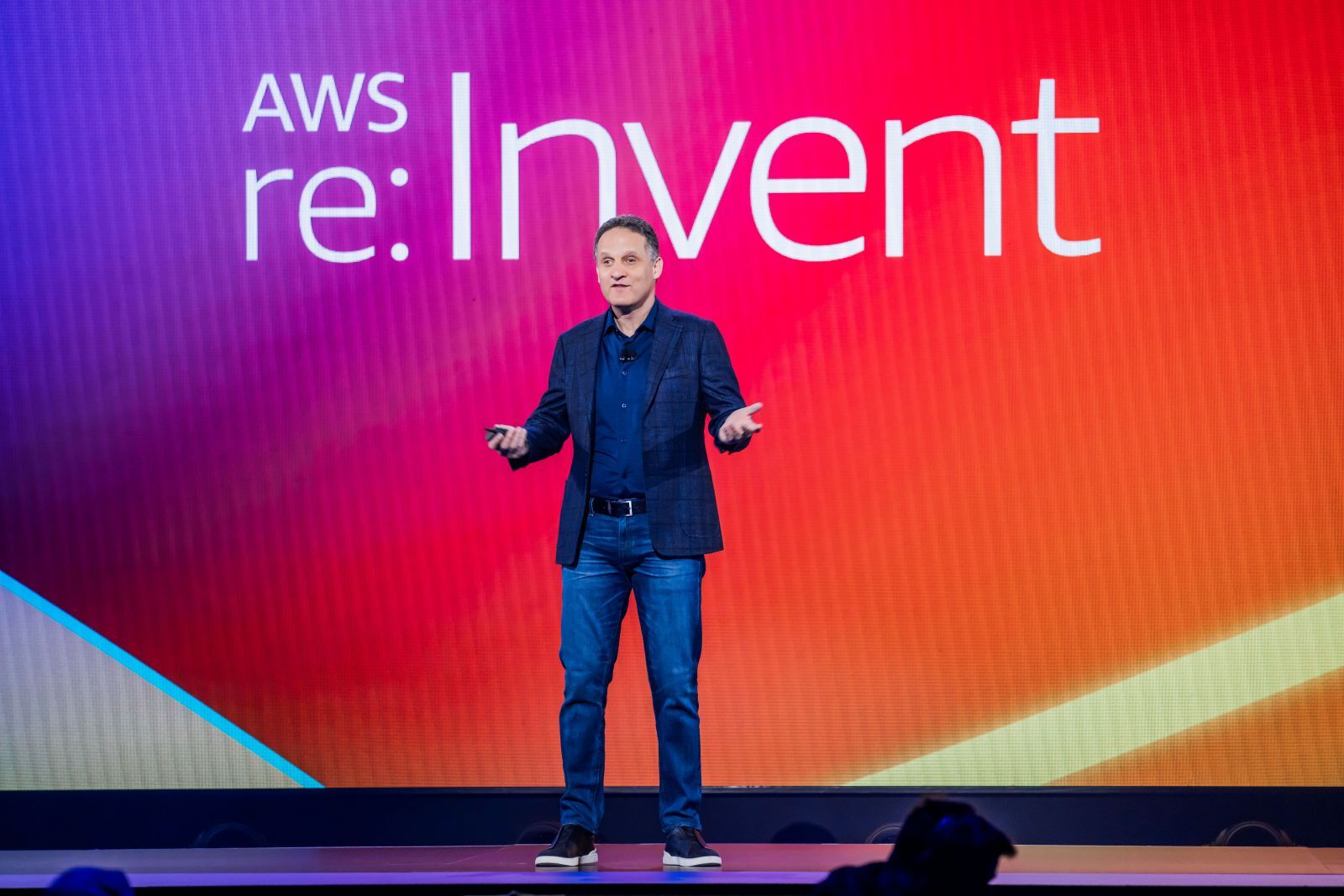
 The second day of AWS re:Invent began with eight gigantic announcements that aim to “drastically alter life after the epidemic.” Adam Selipsky, CEO of Amazon Web Services, addressed these announcements in the second-day keynote address:
The second day of AWS re:Invent began with eight gigantic announcements that aim to “drastically alter life after the epidemic.” Adam Selipsky, CEO of Amazon Web Services, addressed these announcements in the second-day keynote address:
-
·Water Positive by 2030
Amazon.com, Inc., the parent company of Amazon Web Services (AWS), has pledged to become water-positive (water+) by 2030, meaning it would return more water to communities than it uses in its operations. In addition, AWS has declared its 2021 worldwide Water Usage Efficiency (WUE) metric of 0.25 litres of water per kilowatt-hour, indicating its superiority in water efficiency compared to other cloud providers. With this new pledge, AWS will report annually on its WUE metric, new water reuse and recycling efforts, new activities to reduce water usage in its facilities, and advancements in new and existing replenishment programs. Read more about AWS’s water+ initiative here. -
Two New Capabilities to Move Towards a Zero-ETL Future
Two new integrations were just released by Amazon Web Services that make it simpler for users to link and analyse data from various data storage locations without the need to move data across services. Customers no longer have to wait for data to be extracted, transformed, and loaded (ETL) between services thanks to today’s release, which makes it possible to analyse Amazon Aurora data with Amazon Redshift in near real-time. AWS analytics and Machine-Learning (ML) services now make it simple for customers to execute Apache Spark applications on data stored in Amazon Redshift (e.g., Amazon EMR, AWS Glue, and Amazon SageMaker). Altogether, these new features bring AWS closer to its goal of a future with no need for data transformation (ETL) in place. Visit here to learn more about how this service can maximise your data’s worth. -
Amazon DataZone
AWS also announced Amazon DataZone, a new data management service that streamlines the process of cataloguing, discovering, sharing, and governing data stored in AWS, on-premises, and external sources. Administrators and data stewards responsible for an organisation’s data assets can use Amazon DataZone to manage and govern access to data using fine-grained controls to guarantee it is accessed with the appropriate level of rights and in the appropriate context. Engineers, data scientists, product managers, analysts, and business users can all quickly and easily gain access to data throughout an organisation by using Amazon DataZone, allowing them to explore, utilise, and collaborate on data for greater insight. Read more about it here -
Five New Capabilities for Amazon QuickSight
Next, AWS introduced five new features for Amazon QuickSight, its most popular serverless Business Intelligence (BI) tool in the cloud, to help users streamline BI operations. QuickSight Q, a natural language querying capability, has been upgraded today to incorporate forecast and “why” queries, as well as automated data preparation, making it simpler and quicker to begin using this method of querying. In addition, users can now generate billion-row datasets for speedy analysis and visualisation in QuickSight, develop and manage BI assets programmatically to speed up the migration from legacy systems, and publish paginated reports alongside interactive dashboards. QuickSight’s scalability and pay-as-you-go pricing, along with the newly announced features, make it possible for businesses to provide non-technical employees access to data and the capacity to analyse it for insights and make predictions. Go to this page to get started with QuickSight. -
Amazon Security Lake
Also announced was Amazon Security Lake, a service that automatically consolidates a firm’s security data from the cloud and on-premises sources into a purpose-built data lake within a customer’s AWS account. Amazon Security Lake makes it simpler to automatically normalise AWS security data and combine it with dozens of pre-integrated third-party enterprise security data sources. This is achieved by managing data throughout its lifecycle with customisable data retention settings, converting incoming security data to the efficient Apache Parquet format, and conforming it to the Open Cybersecurity Schema Framework (OCSF) open standard. Amazon Security Lake allows security analysts and engineers to continue using their current analytics tools while aggregating, managing, and optimising enormous volumes of diverse log and event data to speed up threat detection, investigation, and incident response. Visit Amazon Security Lake’s page to get more info. -
AWS SimSpace Weaver
Amazon Web Services is introducing a new fully managed compute service called AWS SimSpace Weaver. This service is geared toward facilitating the creation, operation, and execution of massive spatial simulations. Customers can use AWS SimSpace Weaver to deploy spatial simulations to model dynamic systems with many data points, such as traffic patterns across an entire city, the crowd flows in an event venue, or factory-floor layouts, and then use the simulations to visualise physical spaces, perform immersive training, and gain insights on different scenarios to make well-informed decisions. With AWS SimSpace Weaver, users can run a simulation with more than a million interacting entities in real-time, build more complex settings, and cut deployment time for simulations from years to months. To free up their time for developing and viewing simulations in real-time, across numerous live viewers, AWS SimSpace Weaver takes care of establishing Amazon Elastic Compute Cloud (Amazon EC2) instances and managing the network and compute infrastructure. AWS SimSpace Weaver has no subscription or setup fees, and customers pay only for the compute they actually use. AWS SimSpace Weaver can be accessed in its entirety on this page. -
AWS Supply Chain
The CEO of AWS, Adam Selipsky, presented AWS Supply Chain, which can enable organisations to boost visibility into their supply chains so they can make quicker, more informed decisions to reduce risk, cut costs, and enhance their customers’ experiences. To help organisations better monitor their operations in real-time, identify patterns, and provide accurate demand projections that assure adequate inventory to fulfil customer expectations, AWS Supply Chain automatically aggregates and analyses data across numerous supply chain systems. AWS Supply Chain builds on nearly 30 years of experience managing Amazon.com’s logistics network by delivering a unified data lake, machine-learning-powered insights, recommended actions, and in-application collaboration features to enhance supply chain resilience. Visit AWS Supply Chain to find out more information. Adam Selipsky, Chief Executive Officer of Amazon Web Services (Source – AWS)
Adam Selipsky, Chief Executive Officer of Amazon Web Services (Source – AWS) -
AWS Clean Rooms
Last but not least, AWS Clean Rooms, a new analytics service, was announced. This service would allow businesses of all types to work together on a single piece of data without ever having to divulge the underlying information. Customers can quickly and easily set up a secure data clean room on the AWS Cloud and work with other businesses in the cloud to develop novel insights for marketing, finance, medicine, and other fields of study. Access constraints, query output restrictions, query logging, and cryptographic computing tools are just some of the features incorporated into AWS Clean Rooms to ensure the security of sensitive data. To find out more, go to this webpage.
My takeaway from this talk is that AWS is making concerted efforts to simplify the way organisations deal with issues concerning accelerated data growth, cloud migration, security, identity management and much more. The Zero-ETL integration is particularly exciting, as the ETL process is probably a big challenge in data integration that data scientists around the world would just love to do without. The water-positive resolution is also a step in the right direction, as it shows how these huge tech companies are intensifying their efforts to save the planet.




